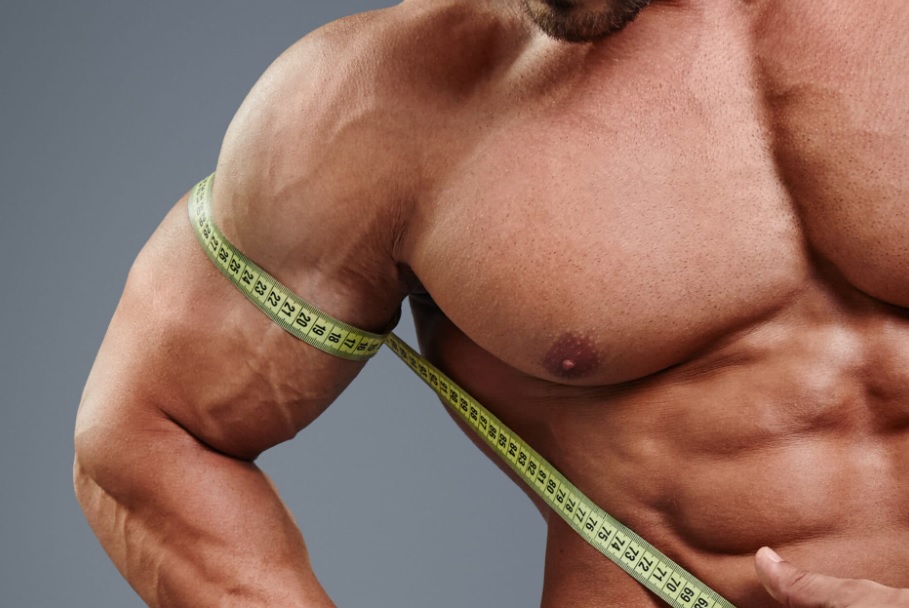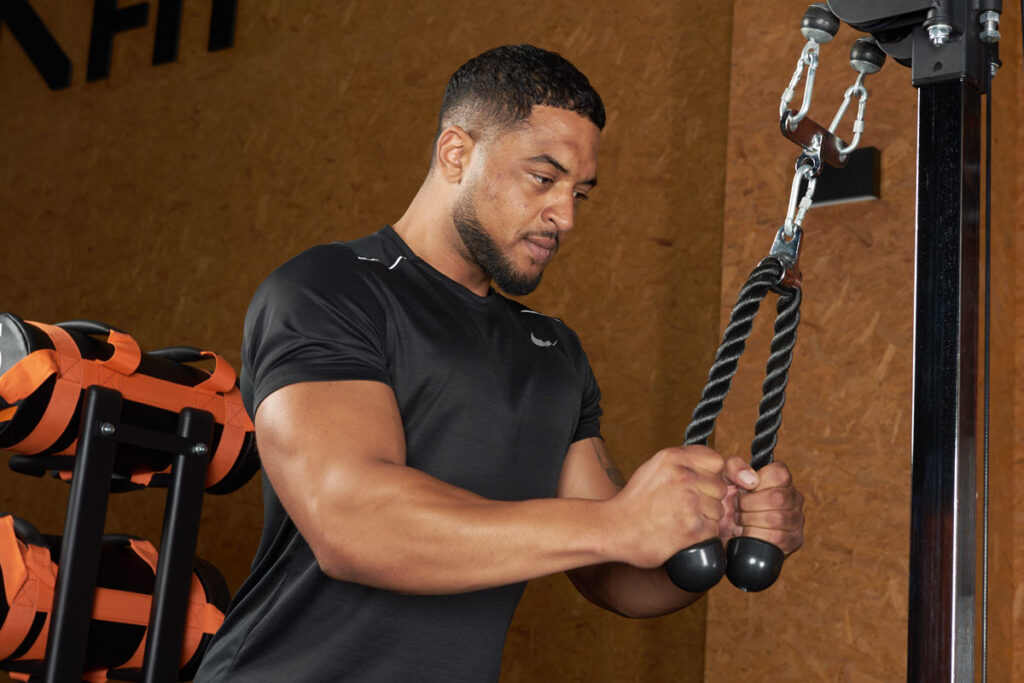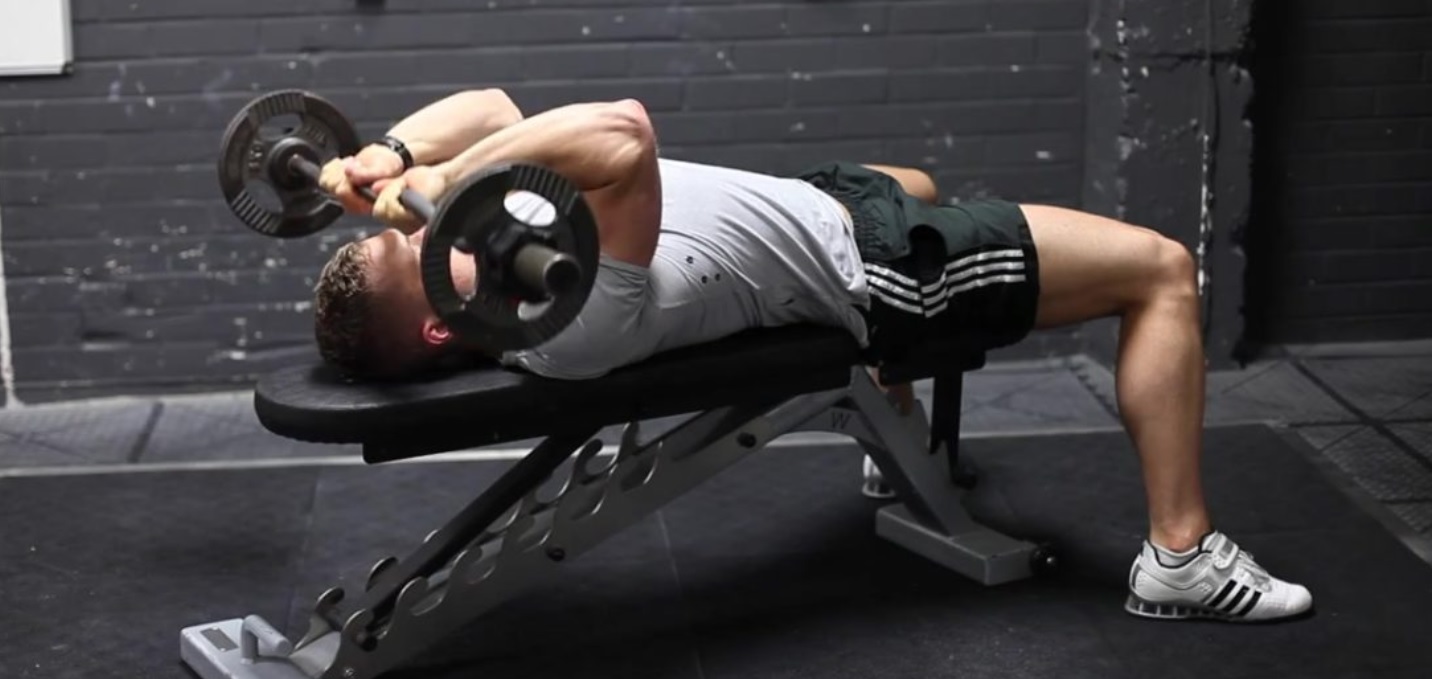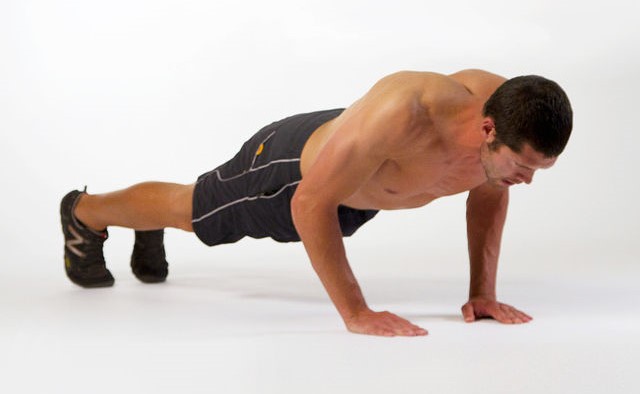When it comes to training your arm, achieving substantial growth isn’t solely about hitting the gym and lifting weights; it’s a science that combines precision, dedication, and intelligent strategy. In your fitness journey, refining your approach to arm training can make a world of difference.

The Essentials of a Successful Arm Day
- Warm-Up: Before diving into your arm-blasting workout, a proper warm-up is essential. It loosens your muscles, increases blood flow, and reduces the risk of injury.
- Balance Biceps and Triceps: While it’s easy to get carried away with bicep curls, balance is crucial. Ensure that your workout includes both bicep and tricep exercises. Neglecting triceps can lead to muscle imbalances and even injury.
- Compound Movements: Compound exercises like close-grip bench presses and pull-ups are fantastic for building arm strength. They engage multiple muscle groups, allowing for efficient workouts that promote overall upper-body development.
- Isolation Exercises: Isolation exercises are specifically designed to target a single muscle group. Incorporate moves like concentration curls or tricep kickbacks to hit your arms from various angles.
- Proper Form: Maintain proper form throughout your workout. This not only ensures that you’re targeting the right muscles but also minimizes the risk of injury.
- Mind-Muscle Connection: To maximize the effectiveness of your arm day, concentrate on the mind-muscle connection. This mental focus can enhance muscle engagement.
- Cool-Down and Stretching: After your intense arm day workout, a proper cool-down and stretching routine can aid in muscle recovery and flexibility. Stretching your biceps and triceps can alleviate post-workout muscle tightness.
- Post-Workout Nutrition: Following your arm day, nourish your body with a combination of protein and carbohydrates. Protein supports muscle repair and growth, while carbohydrates replenish glycogen stores.
- Recovery and Rest: Adequate rest and recovery are essential for muscle growth. Allow your arms the time they need to recuperate before your next arm day.
Neglecting Dedicated Arm Days:
- Optimal Rest Periods: Arm training differs from larger muscle groups like the back or legs, which require longer rest intervals. For arm training, reducing rest periods is a prudent approach. Maintaining the intensity of your workouts is paramount. Shorter rests ensure that your muscles remain engaged and that you maintain a “pump” throughout your arm training session.
- Ample Volume and Intensity: Building muscle, including in the arms, requires a substantial amount of work. The biceps and triceps, being relatively small muscle groups, can quickly get overshadowed if you don’t allocate adequate time to work on them.
- Effective Muscle Stimulation: Working your arms at the end of a longer workout might leave them fatigued and not ready for the intense stimulation they need. By focusing solely on arm training for an entire workout session, you can guarantee that these muscles are fresh and ready to be pushed to their limits.
- Consistency and Progression: Having dedicated arm training days encourages consistency. It’s easier to track your progress, adjust your routines, and ensure that you’re gradually increasing the challenge to promote muscle growth.
The Mind-Muscle Connection for Bigger Arms
- Seeing It as an Outcome, Not a Process: A common fallacy is considering the mind-muscle connection as a mere result or an indicator of a set’s success. Some people believe that merely lifting weights is sufficient for effective muscle training. However, the real transformation occurs in the process, in each repetition and set. The mind-muscle connection is about the journey, not just the destination.
- Testing Your Connection: A crucial test of your arm-muscle connection is your ability to flex specific muscles on command. Your most developed body parts are the ones that can respond instantly to your mental command. If this concept is new to you, consider reshaping the way you perceive training. Developing a profound connection to your muscles should be the core focus of your workouts.
- Refined Range of Motion: The range of motion is a fundamental aspect of any exercise. It can be the difference between merely going through the motions and executing a precise, muscle-engaging movement. If you find that an exercise isn’t stimulating the targeted muscle group as it should, it’s time to recalibrate your range of motion. This may involve transitioning from full-range repetitions to partial reps.
- Partial Repetitions: This allows you to isolate the specific segment of the exercise where you feel the greatest muscular engagement. By deliberately shortening the range of motion, you minimize the involvement of supporting muscle groups. This focused approach ensures that your arms bear the brunt of the work, promoting more profound muscle activation and growth.
- Weight Modification: A common misconception in weightlifting is that more weight equates to better results. However, when your objective is to strengthen the mind-muscle connection, it’s essential not to be apprehensive about adjusting the weight you lift. Sometimes, lightening the load can provide the perfect opportunity to enhance your connection with the target muscle.
- Lowering the weight: This allows you to perform each repetition with precision and intent. It shifts the focus from quantity to quality, emphasizing the importance of feeling every aspect of the exercise. This weight adjustment can also alleviate any potential strain or overuse of supporting muscles, making your arm muscles the primary beneficiaries of your efforts.
- Tempo Experimentation: The tempo at which you perform each repetition can significantly influence your connection to the muscle being worked. This aspect of training provides another avenue for refinement. Experiment with different tempos during your workouts. Whether you choose to increase the speed for a more dynamic approach or slow down each repetition to savor the intensity, select the tempo that enhances your connection. The ultimate objective is to be acutely aware of the muscle being targeted throughout the entire range of motion.
- Minimizing Support from Other Muscles: To optimize arm development, it’s essential to minimize the involvement of supporting muscles. For example, during a bicep curl, you should aim to restrict the involvement of your shoulders and back. This ensures that the stress and tension are concentrated on the biceps, helping them grow effectively.

To Rectify this Common Mistakes, Consider These Steps:
- Isolation Techniques: Experiment with techniques that enhance muscle isolation. For instance, when performing tricep extensions, ensure that the movement isolates your triceps by minimizing the involvement of your chest and shoulders.
- Feedback and Visualization: Use feedback from your body and visualization to intensify the mind-muscle connection. You should feel the muscle stretching and contracting throughout the entire range of motion. Visualization can also help you imagine your muscles working effectively.
Key Principles for 19-Inch Arms Workout
Higher Repetitions:
- Performing sets of at least 20 repetitions is a key aspect of this arm workout structure. High repetitions focus on accumulating volume, which is vital for muscle growth.
- While lower rep ranges are commonly used for strength, the goal here is hypertrophy, which benefits from higher reps.
Push to Failure:
- Training to failure means continuing an exercise until you can’t perform another repetition with proper form. This intensity challenges your muscles and triggers growth.
- It’s essential to maintain good form throughout the set while pushing the muscle to its limits.
Avoid Overtraining Concerns:
- Overtraining occurs when the volume and intensity of training exceed the body’s capacity to recover. However, overtraining is less likely to occur with smaller muscle groups like the arms.
- The focus should be on pushing your muscles to the brink and not holding back due to concerns of overtraining.
Effective Arm Workout Routine
The workout is designed for building stronger and more defined arm muscles, focusing on both the biceps and triceps. Here’s a breakdown of the sets and reps for each exercise, along with some guidance to ensure proper form and effectiveness:
Rope Extensions Superset with Rope Curls (4 Sets / 20 Reps):
- Rope Extensions: Keep your elbows slightly in front of you, and tuck them into your stomach. Focus on flexing the weight towards you rather than letting it drop.
- Rope Curls: Similar to extensions, tuck your elbows into your stomach and emphasize wrist rotation as you contract upwards.

EZ Bar Skull Crushers Superset with EZ Bar Wide Grip Drags (4 Sets / 20 Reps):
- EZ Bar Skull Crushers: Adjust the angle of your elbows, ideally pointing them at least 45 degrees. This shifts the contraction point from a restful position to the most challenging part.
- EZ Bar Wide Grip Drags: Maintain a slower tempo for added intensity and better form. Slower movements make 20 reps feel more demanding while reducing the involvement of other muscles, like the traps.

Dumbbell French Press Superset with Hammer Curls (4 Sets / 20 Reps):
- Dumbbell French Press: Avoid locking out your elbows and try to keep the dumbbell as parallel to the floor as possible at the top of the movement. This extra shift in weight placement further engages your triceps during each repetition.
- Hammer Curls: Keep your elbows tucked into your stomach and lean slightly forward. This position minimizes shoulder involvement and prevents resting at the top of the curl.

Incline Curls Superset with Tricep Pushups (4 Sets / 20 Reps for Curls, To Failure for Pushups):
- Incline Curls: Lower the bench one notch more than usual to target the long head of your biceps more effectively. This adjustment may feel strange initially, but it allows better focus and isolation of the muscle.
- Tricep Pushups: Concentrate on leaning forward and dipping your shoulders down during the negative phase of the pushup. During the contraction phase, keep your hips down and lean back to intensify the engagement of your triceps.

By following these set and rep schemes and paying attention to the recommended form adjustments, you’ll optimize your arm workout for muscle growth and definition. The superset structure and specific tips provided here will help you get the most out of each exercise.









